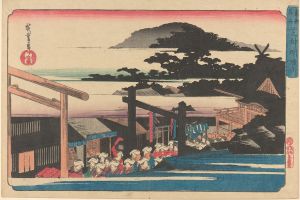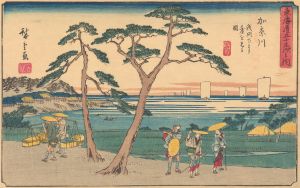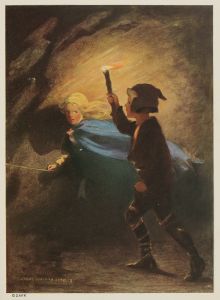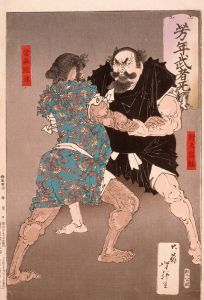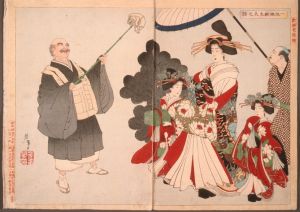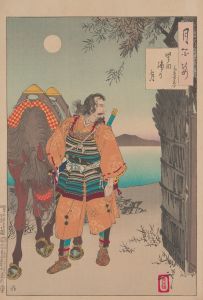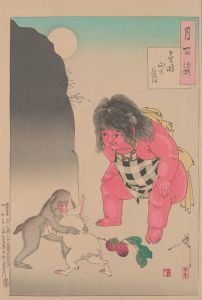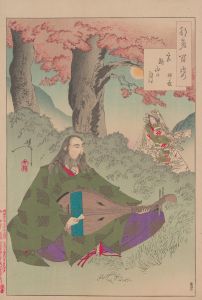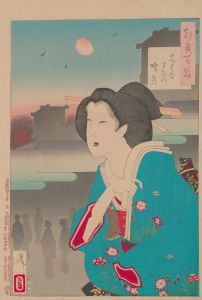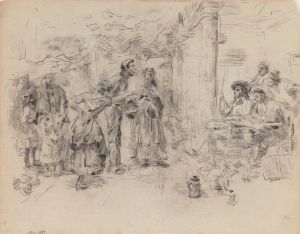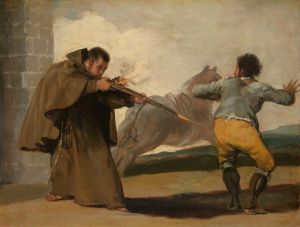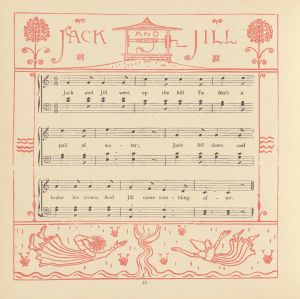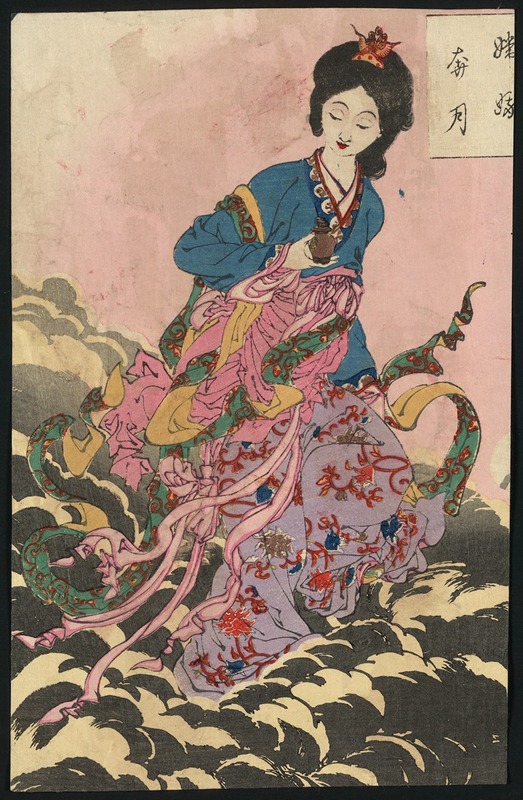
Jōga hongetsu
A hand-painted replica of Tsukioka Yoshitoshi’s masterpiece Jōga hongetsu, meticulously crafted by professional artists to capture the true essence of the original. Each piece is created with museum-quality canvas and rare mineral pigments, carefully painted by experienced artists with delicate brushstrokes and rich, layered colors to perfectly recreate the texture of the original artwork. Unlike machine-printed reproductions, this hand-painted version brings the painting to life, infused with the artist’s emotions and skill in every stroke. Whether for personal collection or home decoration, it instantly elevates the artistic atmosphere of any space.
Tsukioka Yoshitoshi (1839–1892) was a renowned Japanese artist known for his work in the ukiyo-e genre, particularly during the late Edo and early Meiji periods. He is celebrated for his innovative approach to traditional woodblock printing and his ability to capture the complexities of human emotion and the supernatural. One of his notable works is "Jōga hongetsu," which translates to "The True Moon of the Pure River."
"Jōga hongetsu" is part of Yoshitoshi's acclaimed series "One Hundred Aspects of the Moon" (Tsuki hyakushi), which was published between 1885 and 1892. This series consists of 100 woodblock prints, each depicting a scene inspired by Japanese and Chinese legends, historical events, and classical literature, all unified by the motif of the moon. The series is considered one of Yoshitoshi's masterpieces, showcasing his mature style and his ability to blend realism with fantasy.
The print "Jōga hongetsu" features a scene that is deeply rooted in Japanese folklore and mythology. It illustrates the story of Chang'e (known as Jōga in Japanese), the Chinese moon goddess. According to legend, Chang'e drank an elixir of immortality and ascended to the moon, where she resides to this day. Yoshitoshi's depiction captures the ethereal beauty and tranquility associated with this mythological figure, emphasizing the serene and mystical qualities of the moonlit scene.
Yoshitoshi's work is characterized by its dynamic composition, intricate details, and vibrant colors, all of which are evident in "Jōga hongetsu." His use of color and line work in this print demonstrates his mastery of the woodblock printing technique and his ability to convey emotion and narrative through visual art. The print reflects the influence of Western art on Yoshitoshi's style, which he skillfully integrated with traditional Japanese aesthetics.
The "One Hundred Aspects of the Moon" series, including "Jōga hongetsu," was created during a time of significant cultural and social change in Japan. The Meiji Restoration had opened Japan to Western influences, and traditional art forms like ukiyo-e were facing challenges from new technologies and artistic movements. Despite these changes, Yoshitoshi's work remained popular and influential, and he is credited with revitalizing the ukiyo-e genre during this transitional period.
Yoshitoshi's prints, including "Jōga hongetsu," are highly regarded for their artistic and historical significance. They offer a glimpse into the cultural and mythological landscape of Japan during the late 19th century and continue to be studied and appreciated by art historians and enthusiasts worldwide. His ability to capture the essence of traditional stories while incorporating contemporary elements has solidified his legacy as one of the last great masters of ukiyo-e.
In summary, "Jōga hongetsu" by Tsukioka Yoshitoshi is a significant work within the "One Hundred Aspects of the Moon" series, exemplifying the artist's skill in blending traditional Japanese themes with innovative artistic techniques. The print not only reflects the cultural heritage of Japan but also highlights Yoshitoshi's contribution to the evolution of Japanese art during a period of profound change.





